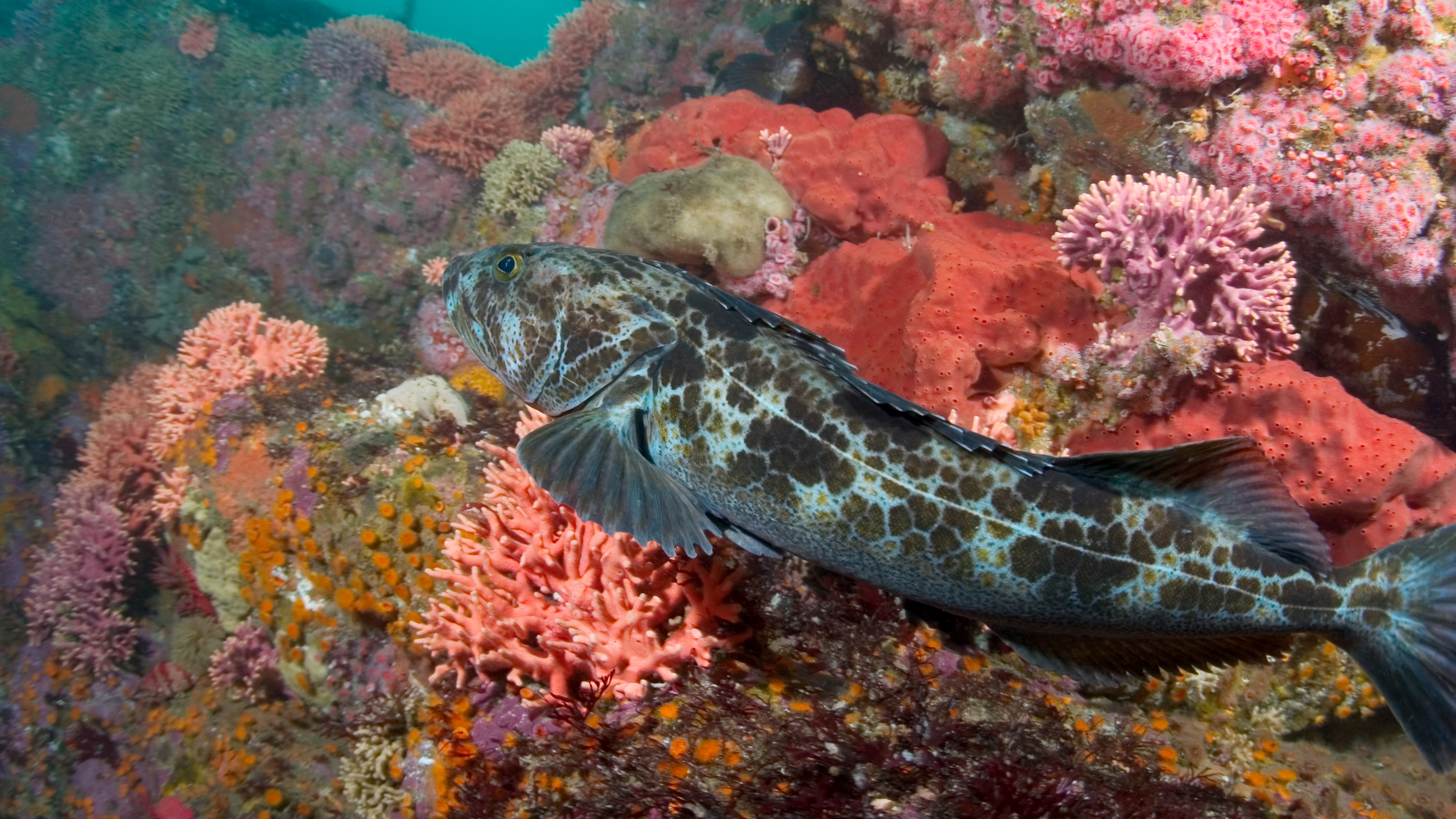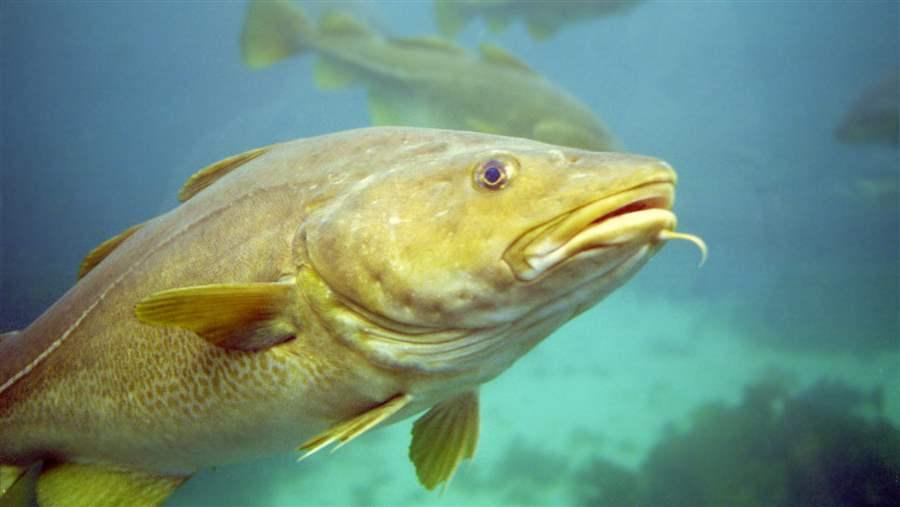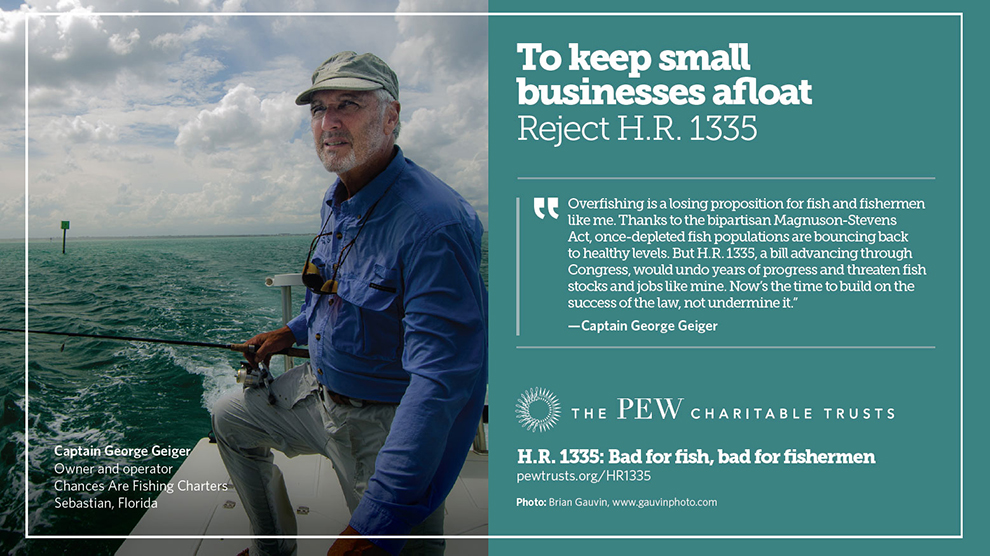H.R. 1335: The Wrong Way Forward
Bill would undermine progress in conserving and rebuilding fish populations and fail to tackle 21st-century management challenges
 © Kawika Chetron
© Kawika ChetronPacific lingcod is one of the fish populations that have been restored to healthy levels as a result of science-based management.
Overview
The U.S. House of Representatives is about to vote on a bill—H.R. 1335 to reauthorize the Magnuson-Stevens Fishery Conservation and Management Act, the primary law governing U.S. ocean fish—that would significantly undercut the nation’s progress in preventing overfishing and rebuilding depleted fish populations. This shortsighted legislation would undermine the act’s core conservation provisions, jeopardizing the gains made in rebuilding and sustainably managing U.S. fish populations. It also would fail to advance a comprehensive approach to fishery management. Additionally, H.R. 1335 would weaken bedrock environmental laws, such as the National Environmental Policy Act and the National Marine Sanctuaries Act, that promote stewardship of U.S. public resources and natural heritage.
Under the Magnuson-Stevens Act, the United States has rebuilt 37 depleted fish populations since 2000.1 And the number of populations subject to overfishing—which occurs when fish are caught faster than they can reproduce—has declined by nearly two-thirds during that period.2 Furthermore, since the act was last reauthorized in 2006 with overwhelming bipartisan support in Congress and strong backing from the George W. Bush administration, U.S. commercial fishing revenue has increased 43 percent.3
This legislation comes at a time when U.S. oceans face significant threats, including habitat destruction, changing conditions, and unsustainable use of marine resources. These pressures harm fish and wildlife populations, fishermen, and coastal communities. The nation’s fisheries management system too often takes a narrow view, focusing on one species at a time and emphasizing how many of each fish can be caught, rather than considering existing scientific information about where fish live, what they eat, what eats them, and what other factors affect them. Integrating that data and shifting to big-picture fisheries management could help ensure that fish populations are sustainable for the communities that rely on them and for the health of the oceans into the future.
The Magnuson-Stevens Act should be updated in a way that promotes a comprehensive, 21st-century approach to managing the nation’s fisheries. But H.R. 1335 would move the country in the wrong direction, threatening the health of U.S. oceans and fish populations.
On April 30, the U.S. House Committee on Natural Resources considered the bill and in a divided vote advanced it to the full House. Congress should reject this legislation and instead support provisions that protect the nation’s fish populations and the millions of Americans who depend on them.
If enacted, H.R. 1335 would:
Cripple the rebuilding of vulnerable fish stocks by establishing broad loopholes (Section 4).
Science-based timelines result in effective action and are important to restoring depleted fish populations. Yet
the bill would create a long list of broad exemptions to the requirement that fishery managers set reasonable
timelines to rebuild these populations. The new exceptions would include situations in which a stock is affected by
undefined “unusual events” or a population’s life history is affected by “informal transboundary agreements.” The
legislation would also replace the existing requirement that stocks be rebuilt in the shortest time “possible,” as
determined using scientific methods, with one to rebuild as soon as “practicable,” a term that lacks a scientific
basis or definition, involves a subjective judgment, and is likely to cause confusion and delay the economic and
recreational benefits of healthy fisheries.
Open the door to overfishing by curbing the use of science-based catch limits (Section 5).
H.R. 1335 would allow managers to exempt many species from the Magnuson-Stevens Act’s required sciencebased
fishing limits, which prevent overfishing. Among the species are fish that serve as food for marine life or
are directly caught by commercial and recreational fishermen.
Undercut the authority of the Endangered Species Act, the National Environmental Policy Act, and other
environmental laws (Sections 7 and 15).
The legislation would give precedence to the Magnuson-Stevens Act over the National Marine Sanctuaries Act,
the Antiquities Act of 1906, and the Endangered Species Act in situations where ocean fish are affected by these
laws. Under the current system, the laws work together to maximize the likelihood that important ocean species
such as Pacific salmon will recover. However, the new provision would transfer to fishery managers, who often
lack the expertise or capacity, the responsibility to appropriately balance and fulfill requirements of these varied
laws. This change could undermine protections for endangered species and important habitats that support
healthy populations and commercial fishing. In addition, the bill would replace the National Environmental Policy
Act’s proven process for evaluating the environmental impacts of fishery management with a weaker alternative
that undermines transparency and accountability by allowing regional fishery management councils to analyze
their own decisions.
Allow overfishing on depleted populations (Section 4).
The bill could allow fishery managers to expand the use of emergency regulations that may be used to extend
overfishing on vulnerable populations, even those included in a rebuilding plan. This would continue to deplete
these fish and delay the achievement of abundant, sustainable populations.
Complicate management of red snapper and other fish in the Gulf of Mexico (Sections 13 and 18).
The bill would create additional layers of bureaucracy and confuse management of Gulf of Mexico red snapper
by extending state jurisdiction from 3 to 9 miles off the shores of Louisiana, Mississippi, and Alabama
for recreational—but not commercial—red snapper fishing and by establishing separate processes and rules
for recreational and commercial management. Commercial fishermen, who have taken considerable steps to
prevent overfishing and stay within their catch limits, would be penalized by less stringent state management
of recreationally caught red snapper. The legislation would also make it more difficult to create effective federal
rules for other reef fish often caught with red snapper. Additionally, H.R. 1335 would transfer responsibility for
conducting stock assessments of reef fish managed by the regional council to an interstate commission that lacks
the experience or capacity to carry out this critical role.
Further restrict public access to data collected by government-funded scientists and programs (Section 10).
H.R. 1335 would limit access for members of the public—including fishermen, nongovernmental organizations,
and academic scientists—to basic fishery information, much of which is collected with taxpayer support. Access
to these data is essential to enable communities to participate effectively in the management process of a shared
public resource.
Recommendations for advancing U.S. fishery management
Rather than fundamentally weakening our nation’s fisheries management system, Congress should consider the bigger picture. Scientists and resource managers are more aware than ever of the threats facing our oceans and have advanced technology and scientific tools to better manage fish populations. Congress should take advantage of this progress by empowering the nation’s eight regional fishery management councils to adopt a more comprehensive approach. Doing so would help ensure that fisheries management addresses the problems of the 21st century and provides long-term economic and environmental benefits.
To advance this more comprehensive approach, Congress should amend the Magnuson-Stevens Act to require regional and national managers to:
- Conserve forage fish, including sardines and menhaden, which are the primary food source for many larger species such as cod and tuna that are caught commercially and recreationally, and also for seabirds and marine mammals.
- Minimize bycatch, the catching and discarding of nontarget fish and other marine wildlife.
- Protect fish habitat from destructive fishing practices and other damaging human activities to ensure that fish have safe places to reproduce, feed, grow, and take shelter.
- Proceed with caution before allowing new fisheries in order to ensure that they are sustainable from the start.
- Create ecosystem plans that use the best available scientific information to give regional managers a clear understanding of the trade-offs presented by different options and to promote better-informed decisionmaking.
Conclusion
H.R. 1335 would jeopardize the progress the United States has made in restoring its fish, fisheries, and coastal communities and would fail to set forth an approach for addressing future problems. Please oppose H.R. 1335 and instead support efforts to build a stronger future for U.S. oceans and the people who depend on them.
 © Dieter Craasmann
© Dieter CraasmannRisky management decisions have allowed overfishing of Atlantic cod populations.
Endnotes
- National Oceanic and Atmospheric Administration, “Status of Stocks 2014” (2015), http://www.nmfs.noaa.gov/sfa/fisheries_ eco/status_of_fisheries/archive/2014/2014_status_of_stocks_final_web.pdf.
- National Oceanic and Atmospheric Administration, Report to Congress, Status of Fisheries of the United States (2001), http://www.nmfs.noaa.gov/sfa/fisheries_eco/ status_of_fisheries/archive/1997-2002/status_of_fisheries_report_congress_2000.pdf; and National Oceanic and Atmospheric Administration Fisheries, “Status of Stocks 2014.”
- National Oceanic and Atmospheric Administration, “Commercial Fisheries Statistics” (2007 and 2013), http://www.st.nmfs.noaa.gov/st1/publications.html.







